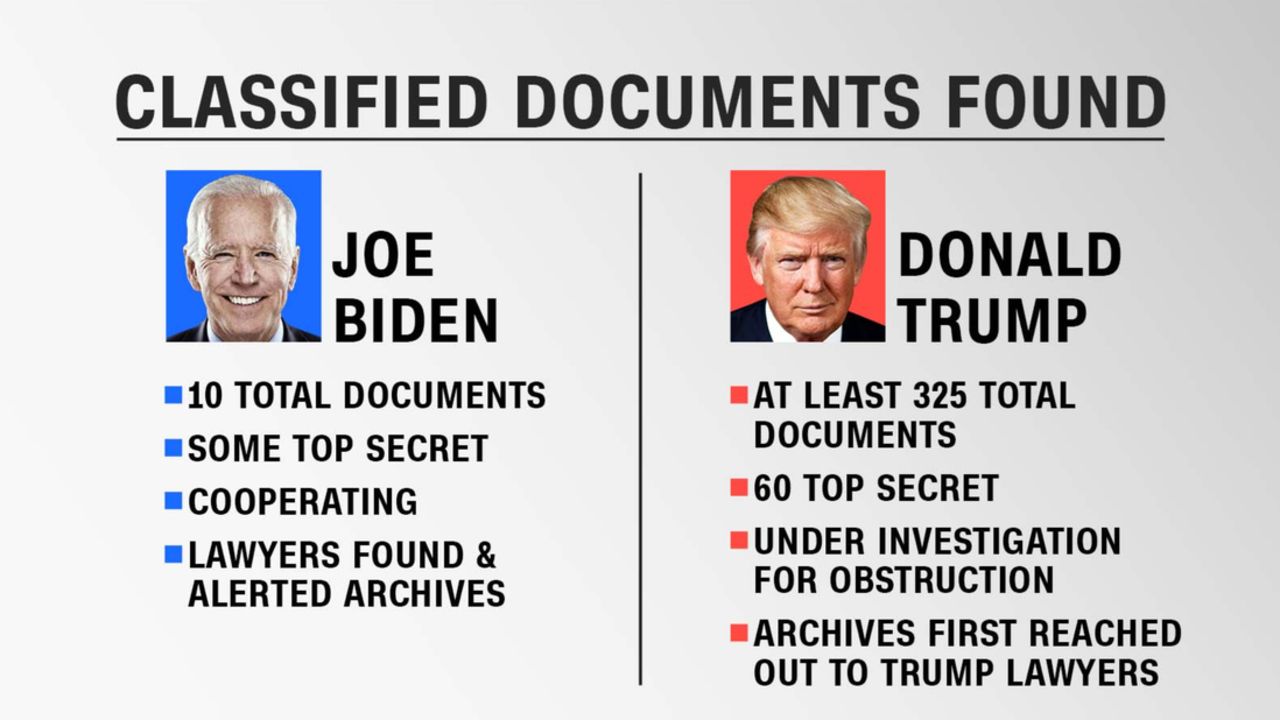The State Of The US Economy Under Biden: A Comprehensive Analysis

Table of Contents
Economic Growth and Recovery Post-Pandemic
The Biden administration inherited an economy recovering from the sharpest recession since the Great Depression. Understanding the growth and recovery under his leadership requires examining key indicators.
GDP Growth
GDP growth under Biden has presented a mixed picture. While initial growth was robust, fueled in part by substantial stimulus packages like the American Rescue Plan, it has since moderated.
- 2021: GDP growth reached approximately 5.7%, a significant rebound from the pandemic-induced contraction.
- 2022: Growth slowed considerably, registering around 2%, impacted by factors such as rising interest rates and global supply chain disruptions.
- 2023 (projected): Moderate growth is anticipated, but forecasts vary depending on the evolving global economic climate and the effectiveness of monetary policy.
This contrasts with the relatively slower growth experienced in the final years of the Trump administration. Analyzing GDP growth under Biden requires considering the unique circumstances of the post-pandemic recovery and the impact of his administration's economic policies, including substantial investments in infrastructure. The ongoing debate around the long-term sustainability of this growth remains a key aspect of discussions on Biden's economic legacy.
Job Creation and Unemployment Rates
A key focus of the Biden administration has been job creation. The unemployment rate has fallen significantly since the start of his presidency.
- Unemployment Rate: The unemployment rate has dropped from a high of 6.3% in January 2021 to below 4% in recent months, nearing pre-pandemic levels.
- Job Growth: Significant job growth has been observed across various sectors, particularly in areas such as leisure and hospitality, which were heavily impacted by the pandemic.
- Labor Force Participation Rate: While job growth has been positive, the labor force participation rate remains below pre-pandemic levels, suggesting potential challenges in attracting workers back into the labor market.
The job market under Biden, while showing positive trends, still faces significant challenges. Understanding the interplay between job creation, unemployment, and labor force participation is crucial for a complete assessment of the economy's health. Further analysis is needed to determine the long-term sustainability of this positive job market momentum.
Inflation and Rising Prices
One of the most significant economic challenges facing the Biden administration has been persistently high inflation.
Inflation Rates and Causes
Inflation surged significantly during 2021 and 2022, reaching levels not seen in decades. This was driven by several factors:
- Supply Chain Disruptions: The pandemic-induced disruptions to global supply chains led to shortages of goods and increased prices.
- Increased Demand: Stimulus spending and pent-up consumer demand contributed to upward pressure on prices.
- Energy Prices: A surge in global energy prices, exacerbated by the war in Ukraine, significantly impacted inflation.
The Consumer Price Index (CPI) and Producer Price Index (PPI) saw dramatic increases, reflecting the widespread impact of inflation on the cost of living. Comparing these inflation rates to historical averages reveals the severity of the current situation.
Federal Reserve Response
The Federal Reserve responded to rising inflation by implementing a series of interest rate hikes, aiming to cool down the economy and curb inflationary pressures.
- Interest Rate Hikes: The Fed aggressively raised interest rates throughout 2022 and into 2023, increasing borrowing costs for businesses and consumers.
- Quantitative Tightening: The Fed also engaged in quantitative tightening, reducing its holdings of government bonds and mortgage-backed securities.
- Effectiveness of Policy: The effectiveness of the Fed's policies in controlling inflation without triggering a recession is still being assessed. The impact on economic growth and employment remains a subject of ongoing analysis.
The Federal Reserve's monetary policy under Biden has been a key element in shaping the economic landscape, and its future actions will continue to be pivotal in determining the trajectory of inflation and economic growth.
Government Spending and Fiscal Policy
Government spending and fiscal policy have played a substantial role in shaping the US economy under Biden.
Infrastructure Investment
The Biden administration's infrastructure plan represents a significant investment in upgrading the nation's infrastructure. This plan is projected to:
- Boost Economic Growth: Infrastructure investments typically stimulate economic activity through job creation and increased productivity.
- Create Jobs: The plan is expected to create millions of jobs in construction, manufacturing, and related industries.
- Long-Term Benefits: The long-term economic benefits of improved infrastructure include increased efficiency, reduced transportation costs, and enhanced competitiveness.
However, the full economic impact of this plan will unfold over several years, and its effectiveness will depend on efficient implementation and effective project management.
Social Spending Programs
The Biden administration has also implemented various social spending programs aimed at addressing economic inequality and providing a safety net. These include:
- Expanded Child Tax Credit: This provided significant financial assistance to families with children.
- Extended Unemployment Benefits: These helped to support individuals who lost their jobs during the pandemic.
While these programs aimed to alleviate economic hardship and stimulate demand, their long-term economic impacts, including their potential effect on inflation and labor market participation, continue to be debated. Analyzing the cost-benefit ratios of such programs remains a key area of research.
Conclusion
The US economy under Biden has experienced a period of significant recovery following the pandemic, marked by robust job growth and initial GDP expansion. However, this progress has been challenged by persistently high inflation, necessitating aggressive action by the Federal Reserve. Government spending, through infrastructure investment and social programs, has played a considerable role, though its long-term economic effects remain a subject of ongoing assessment. The balance between supporting economic recovery, managing inflation, and addressing inequality continues to be a central focus. To gain a complete understanding of the complexities of the US economy under Biden, continued monitoring of key economic indicators and a thorough examination of the administration's policies are essential. Stay informed about the ongoing evolution of the US economy under Biden by following reputable economic news sources and engaging in informed discussions.

Featured Posts
-
 Analyzing Duponts Performance Frances Dominant Victory Over Italy
May 02, 2025
Analyzing Duponts Performance Frances Dominant Victory Over Italy
May 02, 2025 -
 Tongas Stunning Victory Dashes Solomon Islands Hopes
May 02, 2025
Tongas Stunning Victory Dashes Solomon Islands Hopes
May 02, 2025 -
 Ramos And France Clinch Six Nations Championship With Scotland Rout
May 02, 2025
Ramos And France Clinch Six Nations Championship With Scotland Rout
May 02, 2025 -
 Frances Rugby Triumph Duponts Masterclass In 11 Point Victory Against Italy
May 02, 2025
Frances Rugby Triumph Duponts Masterclass In 11 Point Victory Against Italy
May 02, 2025 -
 Viral Cat Posts Cause Concern Among Kashmirs Cat Owners
May 02, 2025
Viral Cat Posts Cause Concern Among Kashmirs Cat Owners
May 02, 2025
Latest Posts
-
 80s Office Chic Selena Gomezs High Waisted Suit Inspiration
May 02, 2025
80s Office Chic Selena Gomezs High Waisted Suit Inspiration
May 02, 2025 -
 Glastonbury Festival 2024 The 1975 And Olivia Rodrigo Confirmed As Headliners
May 02, 2025
Glastonbury Festival 2024 The 1975 And Olivia Rodrigo Confirmed As Headliners
May 02, 2025 -
 Find Glastonbury 2025 Resale Tickets Limited Availability
May 02, 2025
Find Glastonbury 2025 Resale Tickets Limited Availability
May 02, 2025 -
 The 1975 And Olivia Rodrigo To Headline Glastonbury 2024
May 02, 2025
The 1975 And Olivia Rodrigo To Headline Glastonbury 2024
May 02, 2025 -
 Selena Gomezs Sophisticated High Waisted Suit Recreating The 80s Office Look
May 02, 2025
Selena Gomezs Sophisticated High Waisted Suit Recreating The 80s Office Look
May 02, 2025
